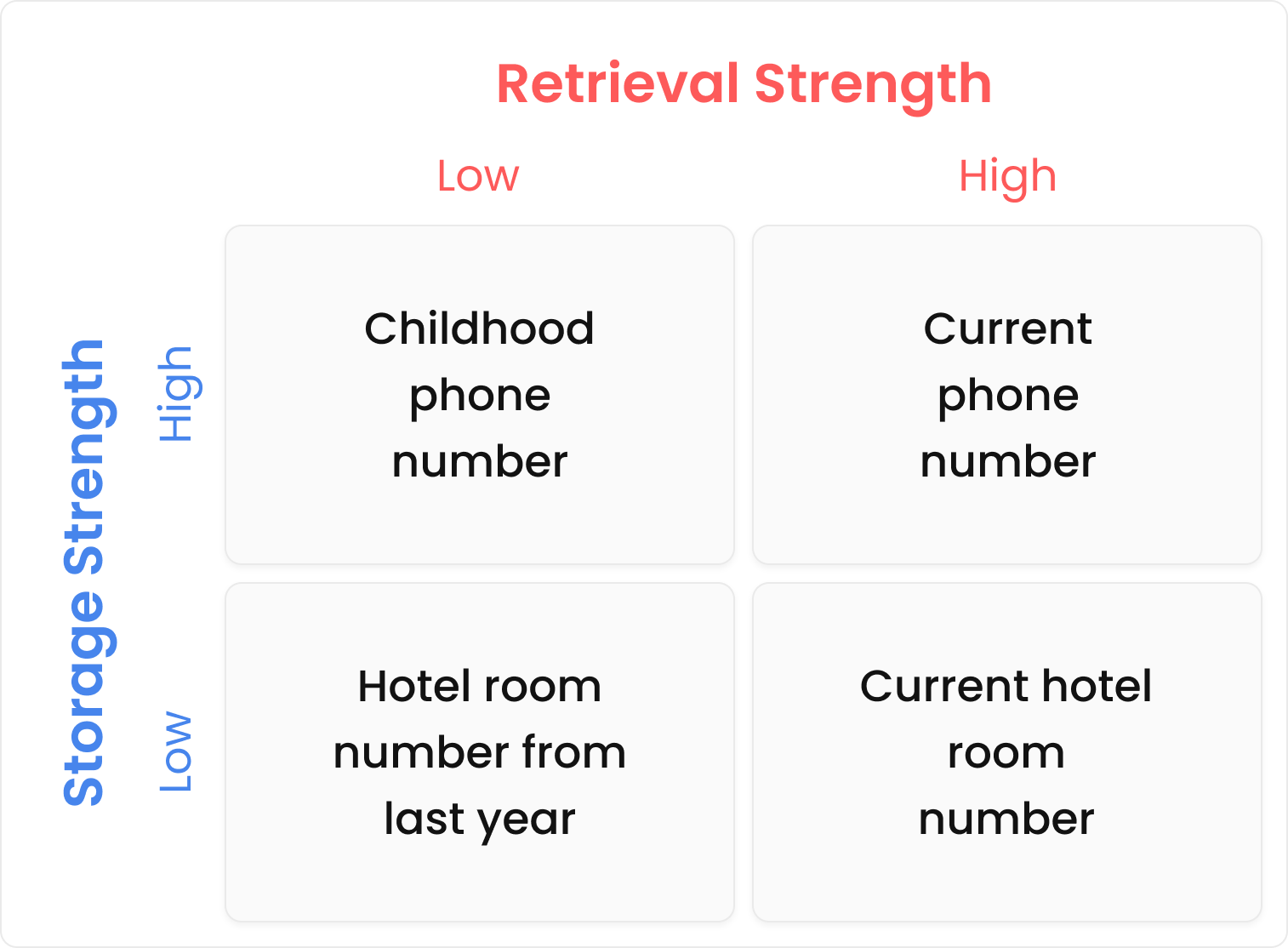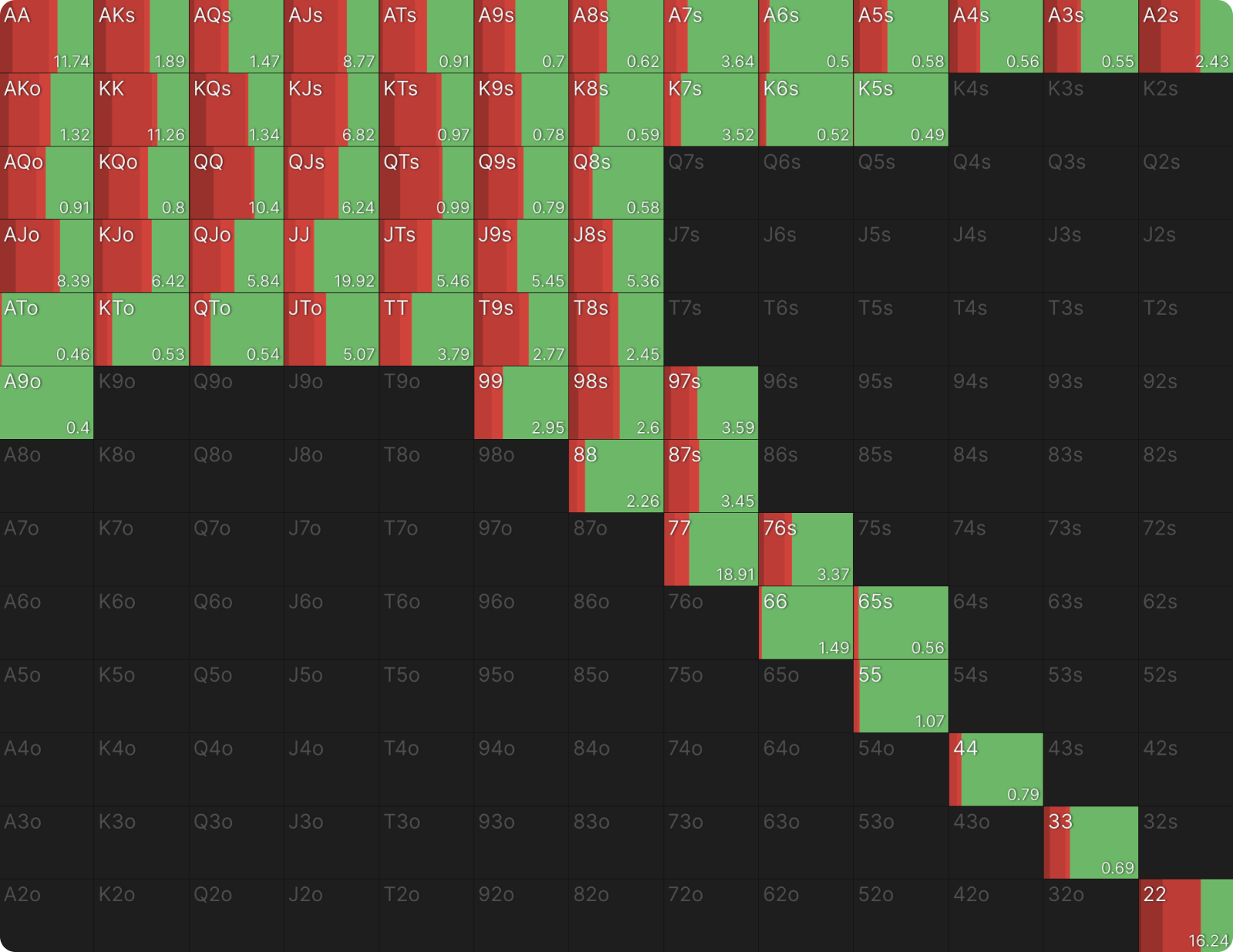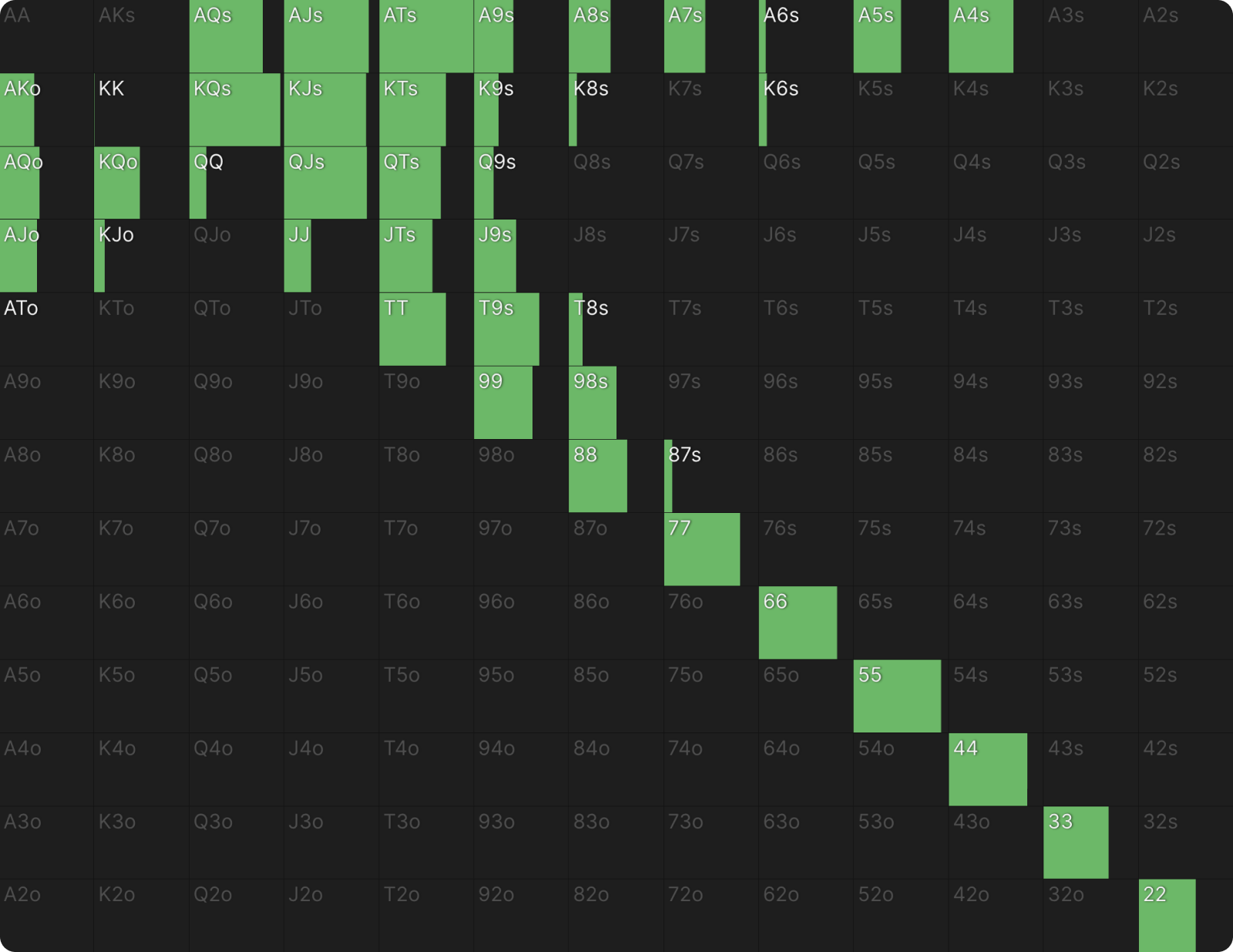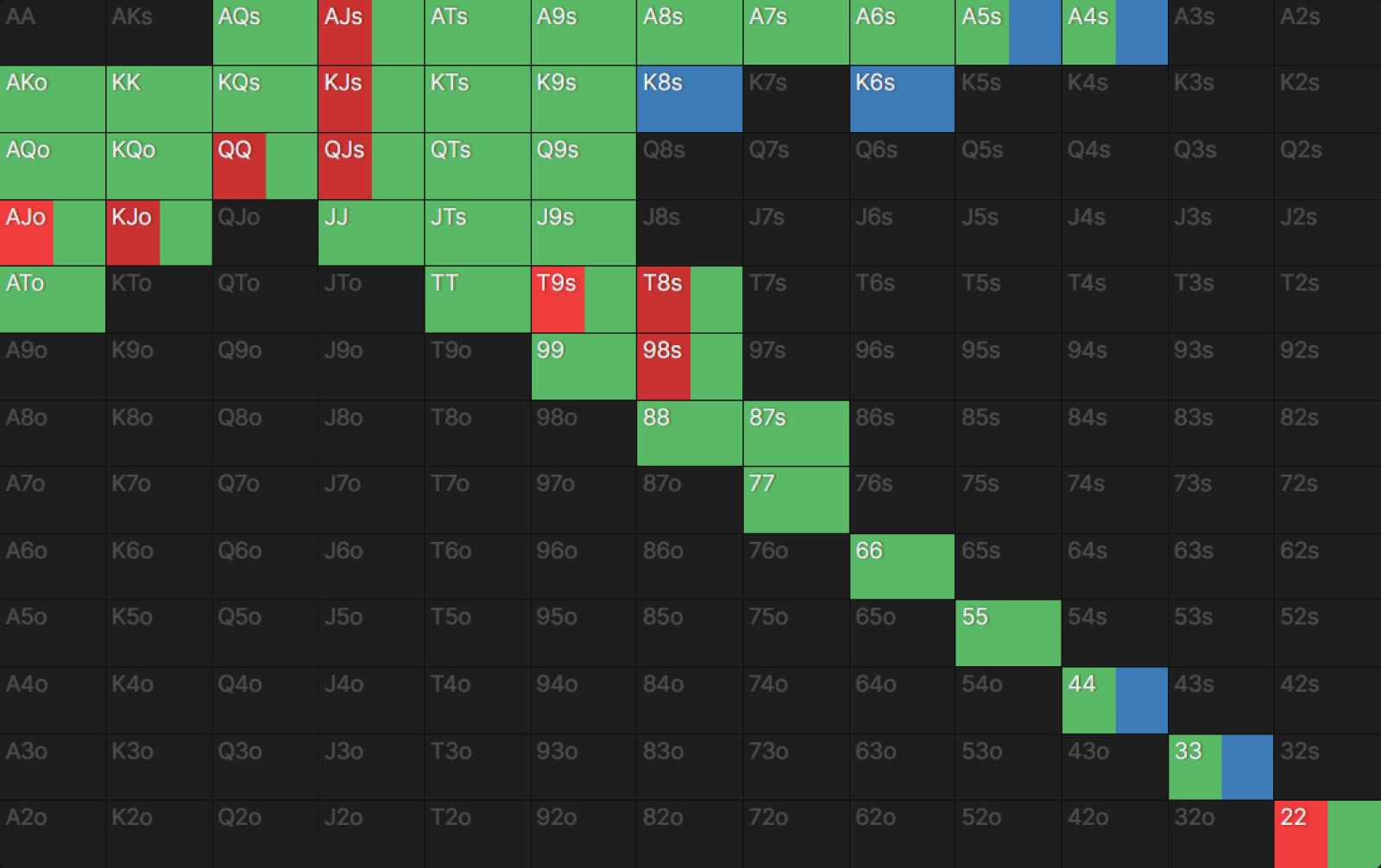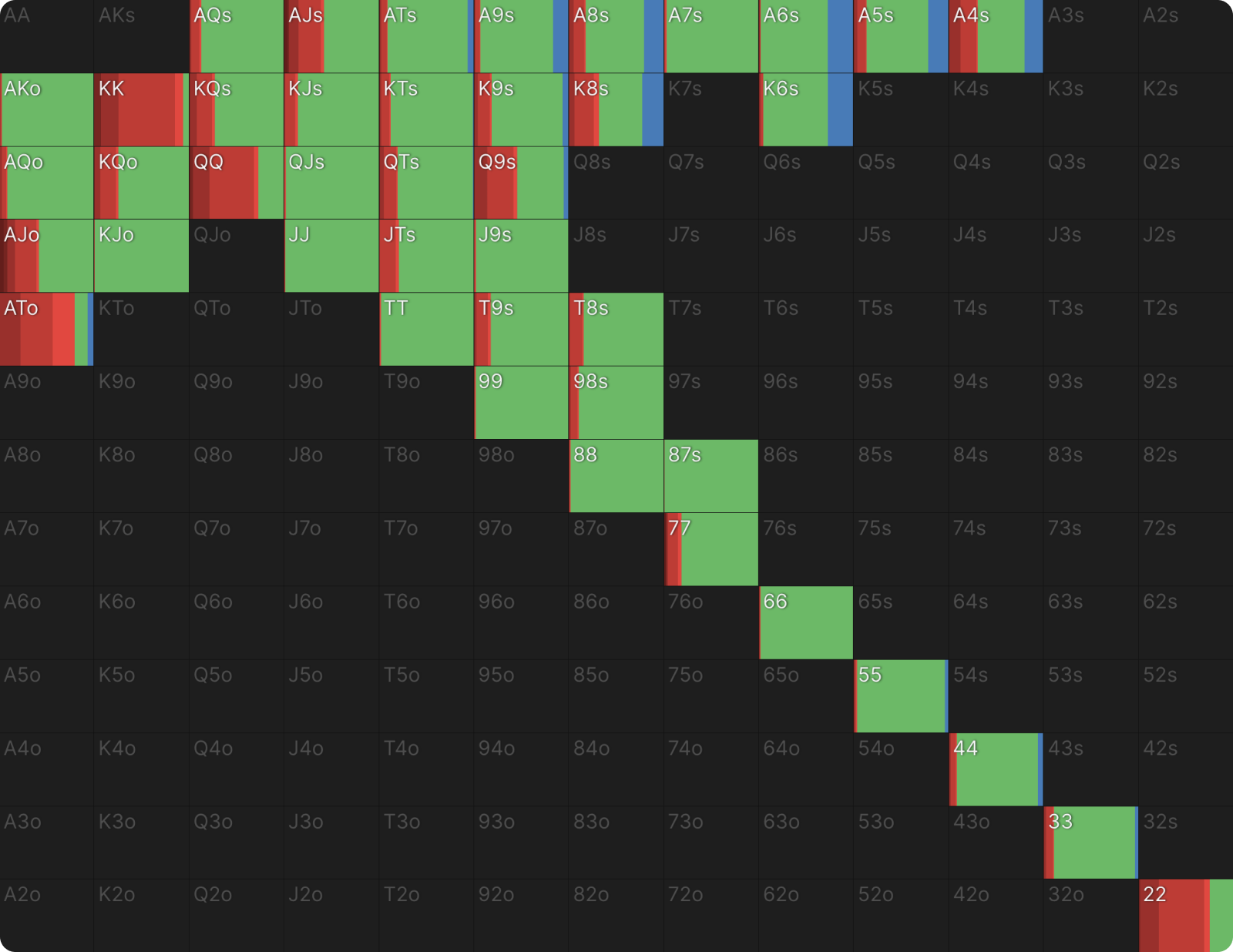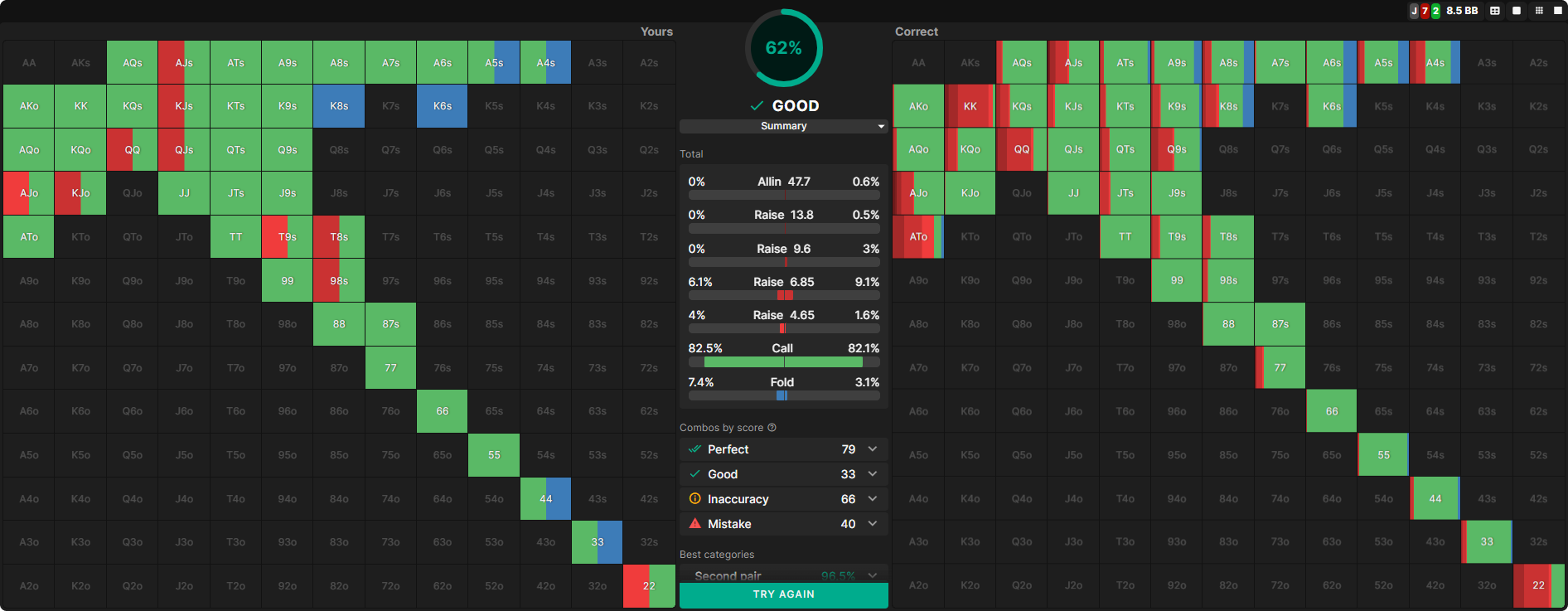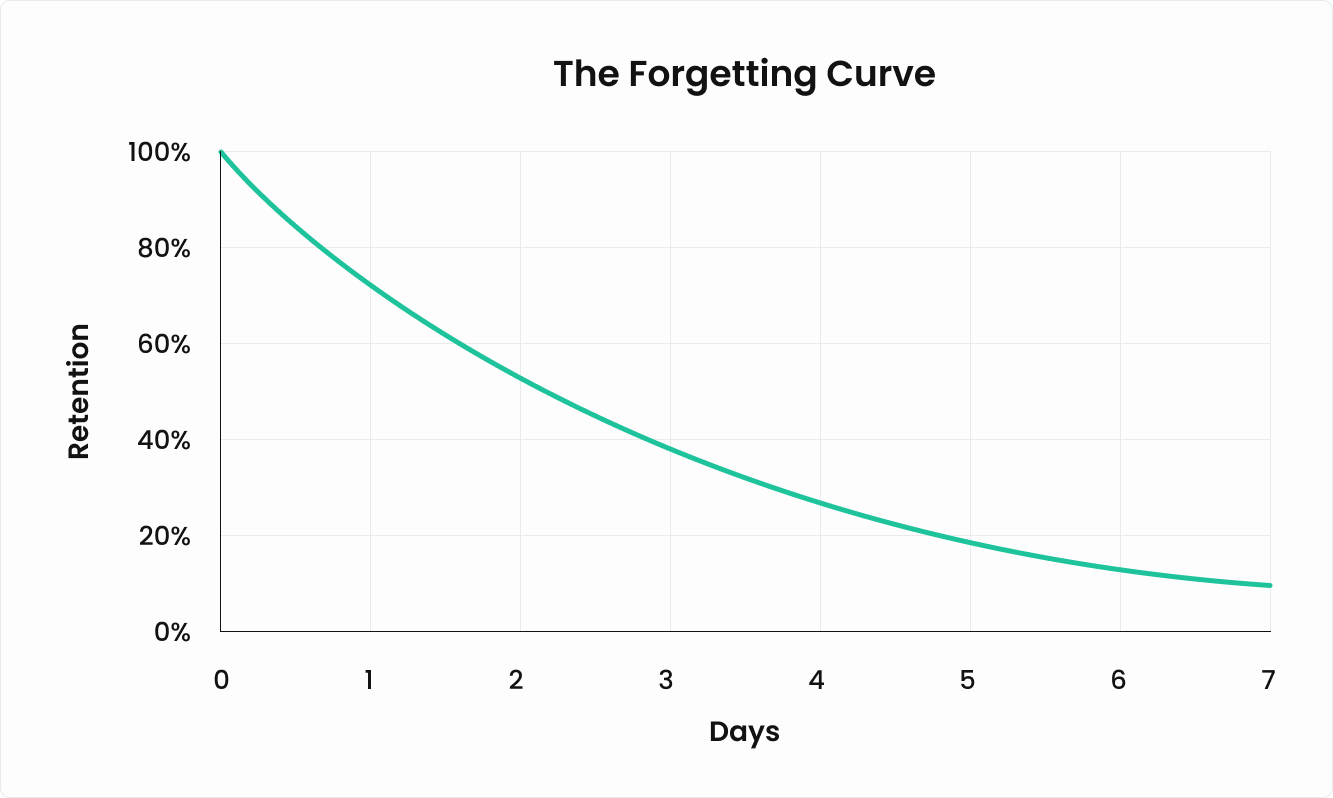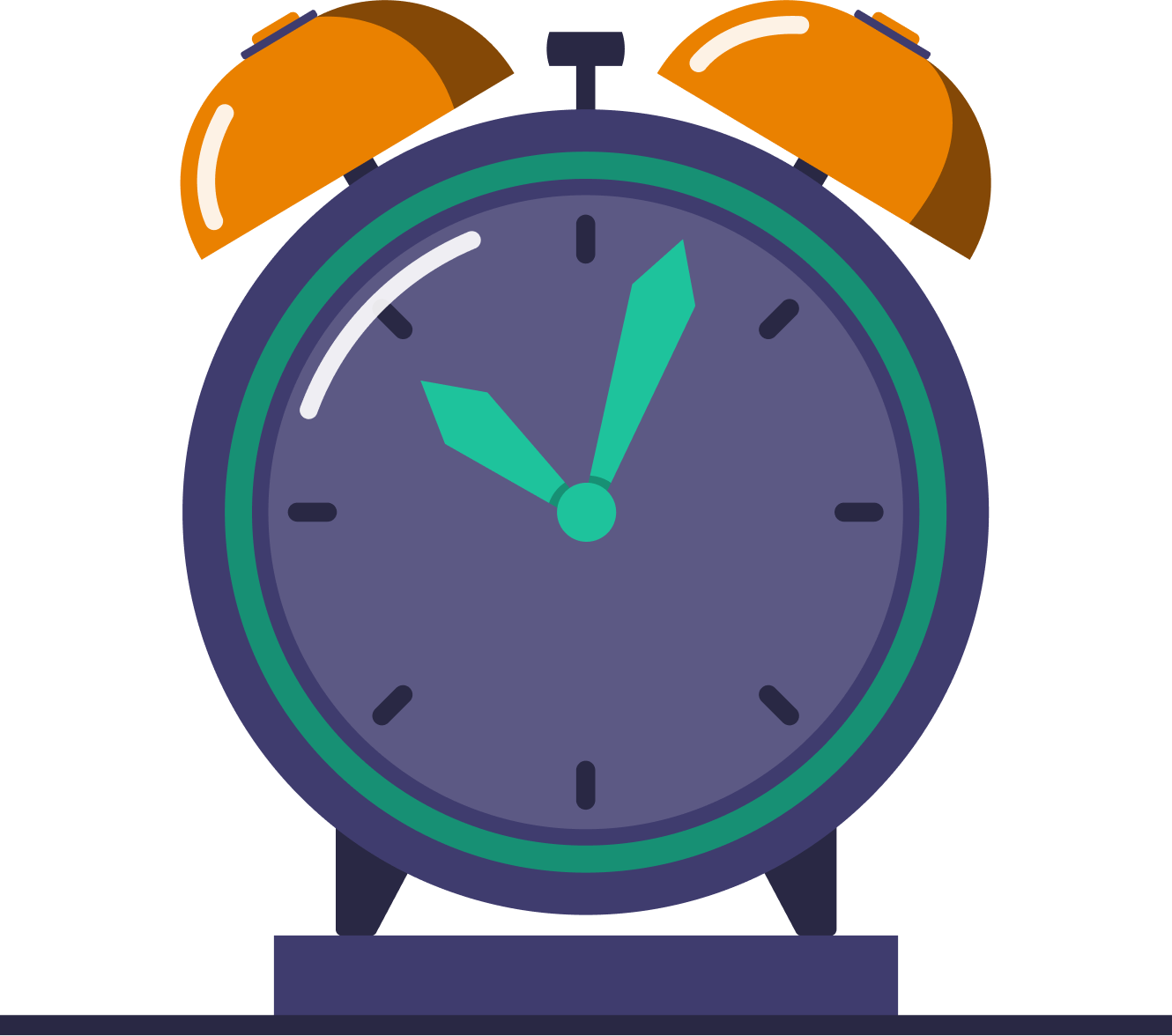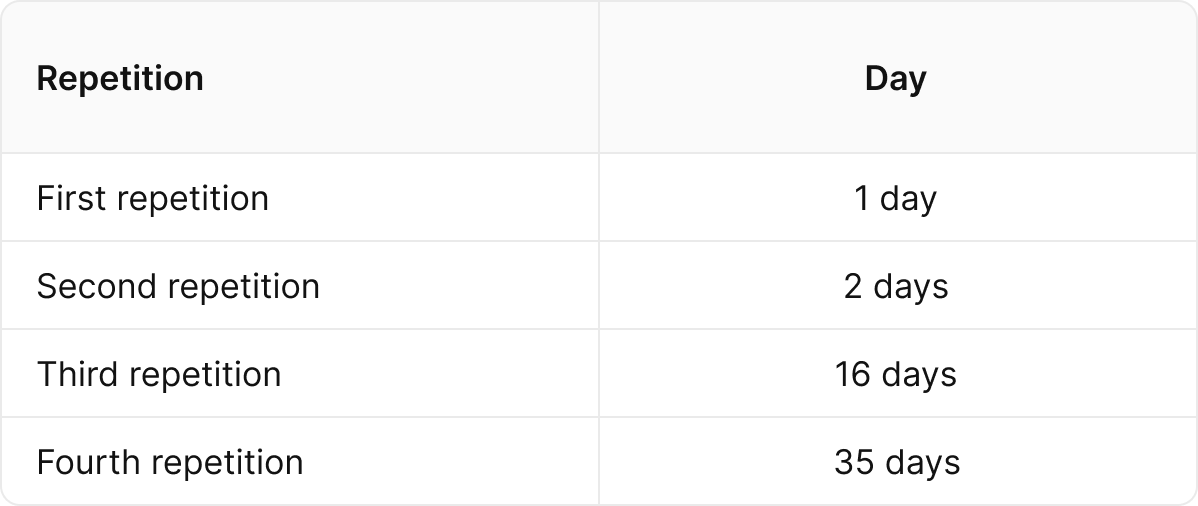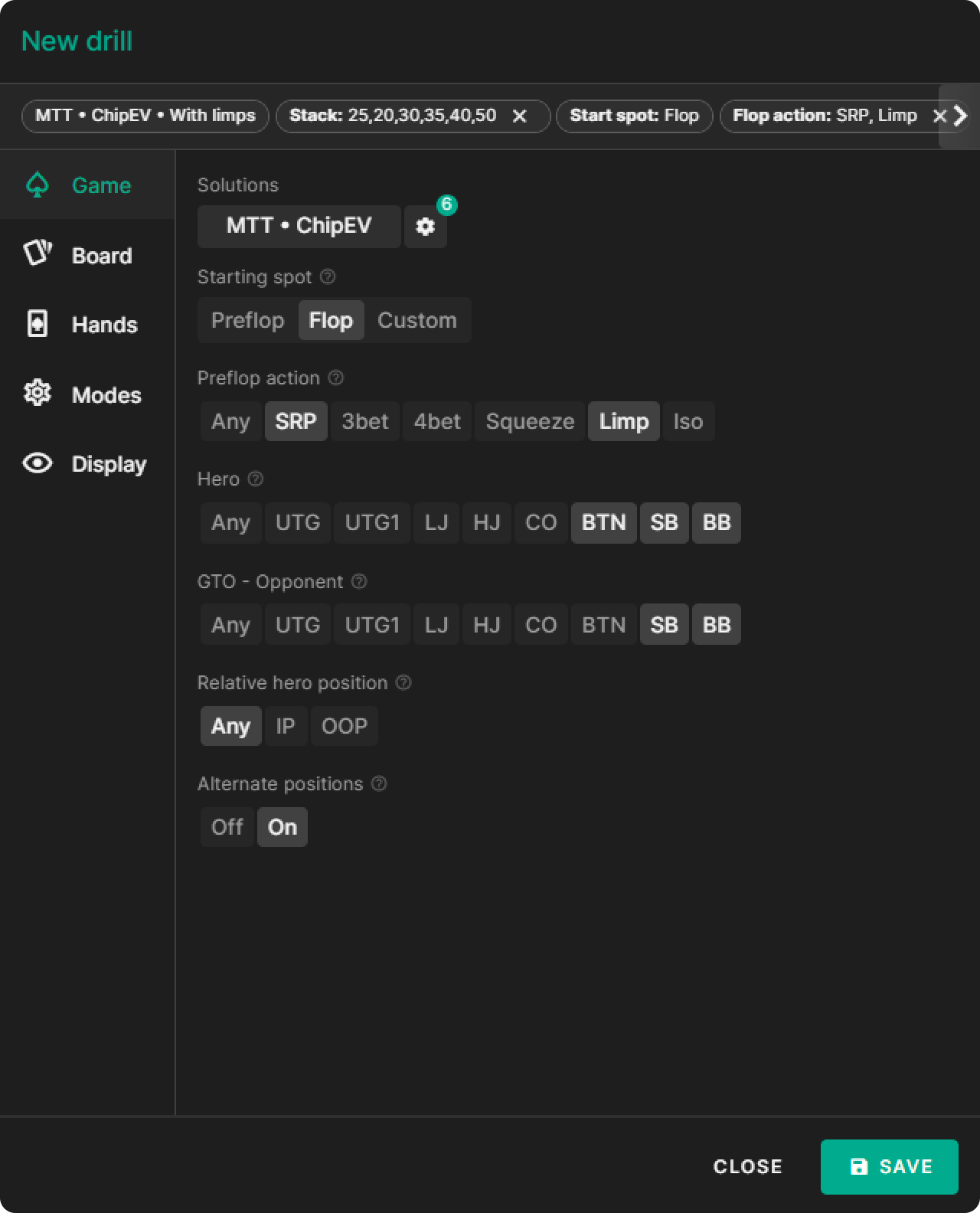The Science of Learning Applied to GTO Wizard
The way we were taught to study in schools was flawed and has negatively impacted our study habits. In recent years, there has been a paradigm shift in the science of learning that can enable us to redeem ourselves. We now know more about the most effective way to acquire new knowledge and improve skills. Thankfully, GTO Wizard is positioned well to harness the benefits of this new field of effective learning.
This article aims to apply some of the new research on effective learning to poker study, particularly in the context of the level of difficulty in the study. So many discoveries have been made, that the following will barely scratch the surface, but it does cover some of the major ways to make a skill stick, as well as why the methods we used growing up were ineffective to begin with.
Acquiring Knowledge vs Mastering Skills
The first thing to make you aware of is that the learning process differs greatly depending on whether you are learning something for the first time or improving an existing skill.
When first learning something new, you need to make things as easy as possible. Let’s say you are studying Badugi, have never played it before, and barely know the rules.
However, once you have established a skill at its most elementary level, improving that skill requires difficulty. Psychologist Robert Bjork pioneered what is called Desirable Difficulty—actions that seem to slow down learning in the short term but improve memory in the long term.
Bjork argued that our memory has Storage and Retrieval strength. Storage strength measures how deeply embedded and well-learned something is. Retrieval strength measures how easily we can recall something. We never entirely forget what we have, once upon a time, learned; instead, our ability to retrieve memories weakens through competition with other memories.
The difficulty required to learn something lies on a continuum. At the very start, when a topic is new, we need as much hand-holding as possible. Once that information is in our memory, however, we require difficulty in our practice to strengthen it.
Learning New Information: Cognitive Load Theory
The Cognitive Load Theory was developed in the 1980s by John Sweller and has been used to design teaching materials. The core concept in this theory is that we have limited mental bandwidth for dealing with new information but no such limitations for material we have mastered in the past.
A simple example is if I showed you this equation:
x + 3 = 12
If you are unfamiliar with algebra, then the above equation might be confusing to you. However, you did not struggle with the numbers, the letter x, the +, or the = sign because you already understood them.
Sweller identified three factors that consume mental bandwidth and make learning harder:
- Intrinsic Load – The combined working memory required to learn a pattern so that it can be transferred into long-term memory. Essentially, an indicator of how complex a task is.
- Extraneous Load – Unnecessary distractions. This can be from an external source like having the TV on in the background, something internal like anxiety, or even poorly created study materials that make the task more confusing.
- Germane Load – Otherwise useful learning techniques (like the ones we are about to explore) that are simply too much for the student to use right now.
A big takeaway from the Cognitive Load Theory for improving learning is that it is more useful for students to study worked examples (problems that include the detailed solution) when learning something new rather than the student trying to solve the problem themselves. The student should have access to answers; they shouldn’t be arriving at the answers themselves at first.
Learning something new is best done by way of using “worked” examples which consist of a problem, its solution, and the intermediary steps to get to the solution.
A classic worked example we have all used and seen the benefit of are ‘How To’ videos on the internet. If, for example, you didn’t know how to change the tire on your car. Most of us would look up the relevant video on YouTube and follow the steps along with the instructor, rather than consult a car manual. You will no doubt know how much easier and simpler this can make an otherwise daunting process. After a few iterations, however, we have the confidence to change the tire ourselves without the video.
Cognitive Load Theory acknowledges that learning new things is tough, especially when the Intrinsic Load is high. The following worked examples shoulder some of that burden and allow us to build the prerequisite knowledge and procedural fluency needed to take our next steps into developing a skill like poker.
How To Use Cognitive Load Theory With GTO Wizard
In many ways, using GTO Wizard in and of itself is an example of embracing Cognitive Load Theory. For example, you don’t need to work out the equity of A♥7♥ against your opponent’s range, that has been done for you. You can literally follow the worked example from start to finish without stretching yourself. All the answers are there for you in the form of solver outputs without needing to reach for a spreadsheet or a calculator.
Cognitive Load Theory also suggests a better way to study videos or direct coaching. Watching poker videos is a very passive way to learn at the best of times, but if the content creator is reviewing a hand (especially in a poker solution library), why not open the solution and follow it alongside the coach as you watch? Just like how you would do when first changing a flat tire.
At a very basic level, Cognitive Load Theory should demonstrate the importance of removing distractions as you use GTO Wizard, to reduce the pressure of Extraneous Load, as well as using Focus Mode so you don’t get distracted any further by the tool itself.
More than anything, Cognitive Load Theory shows us the importance of not trying to run before you can walk when learning something new. For example, if you are new to nodelockingNodelock
The act of fixing (“locking”) a player’s strategy at some decision point (“node”). This process is used to build exploitative strategies., don’t just dive in and expect to understand how to do it, and grasp what the solutions represent. Instead, why not watch our ‘How To’ video on Nodelocking and replicate the examples in that one first, as you watch the video?
Chances are, if you are reading this article, you are already well versed in GTO Wizard solver outputs and the main GTO concepts, so let’s move on to how you can improve your existing skills.
Desirable Difficulty: Retrieval Practice
I have gone on a deep dive into the world of effective learning, and perhaps the biggest paradigm shift for most people will be the power of Retrieval Practice.
Most of us learned at school by cramming. We would read a textbook, then read it again, and again, hoping that the lessons stick.
A much more effective way to learn material is to close the book and test yourself on it.
Close the book & test yourself
Retrieval Practice is the strategy of recalling facts and concepts to strengthen long-term memory. It has been shown to improve memory and even boost higher-order thinking.
When taking a class, most of us would take notes. A much more effective way to learn would be not to take notes but instead write down, from memory, the biggest lessons we took from the class afterward. Rather than taking notes in an e-book, we would be better served to write down questions instead that would force us to remember key concepts the next time we revisit the book. Medical students often use flashcards to memorize the great array of information they need to progress in their careers, a classic example of Retrieval Practice.
When we retrieve a memory, we build the muscle of remembering, or at least the skill of not forgetting.
Retrieval Practice works for several reasons:
- It is difficult, which (other than when information is new, as per the Cognitive Load Theory) helps form stronger neural pathways to long-term memory. When we successfully retrieve a memory, we build the muscle of remembering, or at least the skill of not forgetting. This makes it easier to access the information when we need it.
- When we attempt to recall a fact and fail, we identify areas we need more work on. If you are trying to memorize the periodic table and cannot recall the symbol for Zinc, you will know you have to work more in the future to remember the Zinc symbol specifically.
How To Use Retrieval Practice With GTO Wizard
If you have ever used flashcards, you will know how tough but effective they are for learning. I have been experimenting with my own version of a flashcard system while using GTO Wizard. I try to predict, out loud or on paper, what the next action on the next node might be. This forces me to ‘retrieve’ what I think the correct strategy would be and highlights a gap in my knowledge when I get it wrong.
For example, this spot is LJ vs HJ, 50bb effective, single-raised pot, on a J♠7♥2♦ flop. This is LJ’s first action:
When the LJ bets 1.4bb, rather than simply look at the next action, I like to attempt to speak out loud, or write down, what I think the response will be from the HJ, who has this range:
I’ll walk through this exercise here to demonstrate the process. Perhaps you can too, before scrolling any further. This is what I wrote down:
I suspect that the HJ will fold rarely, but the hands they do fold will be perhaps the weakest suited Ace-x some of the time, K6s, and perhaps 44–33.
I also suspect that the raises will be small in frequency, but likely to be QQ, AJ–QJ, 22 and the bluffs will be hands like T9s, 89s, T8s, etc when they also have a backdoor flush draw. These hands will all mix.
The rest of the hands will be calls.
If you like this experiment, you can go one step further and use GTO Wizard’s Range Builder to make your own ranges to compare to the GTO Solution. This is what I quickly put into Range Builder before I looked at the actual solution:
And only now we look at the actual solution, which I promise I have not looked at:
It looks like I got the frequency of hands and which ones fold close, though I was expecting some pure folds.
I was right to suggest 22, for bottom set, was a raise. I was also correct not to suggest top set would be raised. I didn’t even think about middle set, which is sometimes raised, so I got that wrong.
I missed a trick with the bluffs. I didn’t even consider that K8s and A8s would be bluffs. In hindsight, these make good bluffs because they have double backdoors that can hit runner-runner straight and runner-runner flush. They also likely block value hands like AJ, AA, KK, and KJ. I also missed perhaps the best straight draw bluff, which was Q9s.
I am shocked to see ATo in there as a bluff, and I’m actually not sure why it is. My guess is that it blocks AJ/TJ and can also make a runner-runner straight. But clearly, I would need to study this as it was an oversight on my part.
Finally, KJs, QJs, and KJo are all mostly played as calls instead of raises. Looking at the range again, I suggested we raise all our Jack-x essentially, which would cap our calling range considerably.
If you did this experiment along with me, we both got the benefit of ‘testing with the book closed,’ which is precisely what retrieval practice is. We got more out of the process than just looking at the solution. Just as important, the testing process highlighted potential gaps in my knowledge, which can inform future study.
Thankfully, the Range Builder tool lets you take this process one step further and actually tests you by comparing your range to the actual range, giving you a score. You can do it on Easy, Medium, and Hard mode, each of which has progressively more bet sizes to choose from. It might be the most valuable tool in the GTO Wizard suite.
If you were to only take away one thing here, I would want it to be an understanding that just passively observing solver outputs and/or training videos with an expectation that the lessons will ingrain themselves by sheer exposure is a recipe for disappointment. I think the Range Builder is a massively underused tool in this respect. There is another testing method that GTO Wizard provides, in the form of drilling with the Trainer. However, I believe the Range Builder is an important exercise because it strengthens recall of the why behind actions, rather than going on instinct, which we sometimes do in drills.
A firm grasp on solutions awaits you if you go the extra mile, beyond mere passive observation of them.
Desirable Difficulty: Spaced Repetition
Retrieval practice, in many ways, is the skill of not forgetting. Memory science was greatly influenced by Hermann Ebbinghaus in the 1880s and his concept of the Forgetting Curve. This was later developed into the ‘Forget to Learn’ theory by Benedict Carey. Both looked at why some memories disappear, and others stick with us forever.
As we mentioned earlier, there is storage and retrieval strength. Storage strength informs how deep a memory is embedded, but retrieval strength indicates how accessible the memory is. You can be reminded of something you had completely forgotten about for 20 years, and then it seems like you remembered as if from yesterday, but to access a memory without prompting needs regular maintenance.
Forgetting is, paradoxically, what allows the remember muscle to grow.
Therefore, forgetting is an access problem. The memory exists in storage, but you cannot find it. Think about a time when you saw somebody you knew many years ago and have forgotten their name. Once the name has presented itself again, you remember it. But the period where it is on the tip of your tongue is when you’re having a retrieval issue. However, after you have been reminded of their name, the chances of remembering it when you see them again are much greater.
This was the second big finding of the Forget to Learn theory: The greater the drop in retrieval strength, the greater the increase in learning when the memory is accessed again. Forgetting is, paradoxically, what allows the remember muscle to grow.
Therefore, to optimally learn something, you must first begin to forget it. We do this by spacing out when we study it. Peter Wozniak researched this in-depth and has claimed that the ideal spacing period for retrieval practice is as follows:
If you have ever used an advanced flashcard system like Anki, you will know they do not show you the same flashcards every time. It will shelve a flashcard and show it to you again much later on. This is to give you a chance to start forgetting the lesson, so learning will strengthen when you remember it later.
How To Use Spaced Repetition With GTO Wizard
Instead of getting bogged down in trying to figure out what the perfect spacing would be between studying a particular spot, the most important takeaway here is to not cram all your study into single sessions. Don’t spend two days hammering UTG vs BB 3-bet pot (3BP) solutions and assume you will be a master of that spot for eternity. Return again and again to the areas you have studied to check for understanding and to reduce the impact of the Forgetting Curve. This is especially true if the subject area is a leak of yours.
Don’t cram all your study of a certain spot into single sessions. But rather spread them out over multiple sessions.
Let’s say you played a session where you messed up in a BTN vs BB 3BP spot. The typical way most players study to plug the leak would be to either study the spot once or to study lots of similar spots in a short space of time.
A better solution would be to study the spot and then revisit it (maybe even the initial hand) a week later. And pay another visit a few weeks after that, and so on. You could potentially do this with tens or hundreds of spots you are working on. Spacing them out does not mean having dormant periods with no study, it just means having lots of different areas of study spread out.
This brings us to the final component of Desirable Difficulty.
Desirable Difficulty: Variability
Retrieving memories is difficult. Spacing out to create delays when you retrieve them is like injecting extra difficulty because you start to forget. Finally, surprise makes study difficult.
Going back to cramming, one of the ways it is less effective is because it is a form of ‘Blocking,’ which is when you practice the same skill over and over in predictable blocks. For example, if you are a golfer, you spend the first part of your training session working on teeing off, and the final part of your training is putting. If you like routine, this might seem like an optimal way to learn.
The problem with this method of learning is that your brain predicts problems of a certain type and makes knowledge for solving them more readily available. Life is never this predictable, and doing this does not strengthen your ability to access this memory when you need it the most.
The final component of Desirable Difficulty is Variability. We have to mix up our practice. If we don’t know which problem is coming, our brains have to work harder to access the required knowledge to solve them. This makes practice closer to the real thing.
How To Use Variability With GTO Wizard
The obvious way to use the benefits of variability in GTO Wizard is to make your drills unpredictable. It’s natural to have drills for your most severe leaks and current study areas, but at a minimum, you can set them up in such a way that you don’t know what is coming.
For example, if you are currently studying BTN vs BB single-raised pot, SB vs BB limped pot and BB donk leads, the likely way most of you would do this would be to have a drill for each and either concentrate on one per session or move between them, one by one.
A more effective study method would either be to jump between spots in random order, or wherever possible, combine several spots into one drill. For example, the following drill would cover the three earlier mentioned spots to some extent.
There would be some irrelevant hands included, but that in itself would benefit from the surprise element of variability.
This is also a reminder to mix up your study generally. If you only look at solver solutions, do an old-fashioned hand review with pen and paper. If you always watch videos, hire a coach, and so on. Predictability slows learning down, so introduce variety to emulate the surprises that come when you are at the tables.
Conclusion
The old way most of us learned was to repeatedly expose ourselves to the required information in the hopes it would stick. We read a textbook, make notes, then reread the notes, again and again. Many of us treat poker study the same way, passively watching training videos or looking at solver outputs.
The study of effective learning has uncovered that strengthening our ability to access memories is the path to mastering a topic. Studying with a closed book is much more effective than rereading an open book.
We learn best by:
- Studying worked examples with solutions, rather than trying to solve the problem ourselves, when a subject is new to us
- Recalling what we know when the material has become a memory
- Spacing out our practice
- Mixing up our practice
All of this can be done with the GTO Wizard. We can:
- Study GTO Wizard solutions as worked examples in new spots we haven’t studied
- Test ourselves by trying to predict what the actions on the next node of a solution will be (perhaps by using the Range Builder)
- Return to drills and hands we have studied before, to reduce forgetting
- Mix up our drills
I appreciate much of this may be very new to many of you, so I’ll end with some excellent recommended reading if you want to explore these topics further.
Author
Barry Carter
Barry Carter has been a poker writer for 16 years. He is the co-author of six poker books, including The Mental Game of Poker, Endgame Poker Strategy: The ICM Book, and GTO Poker Simplified.

